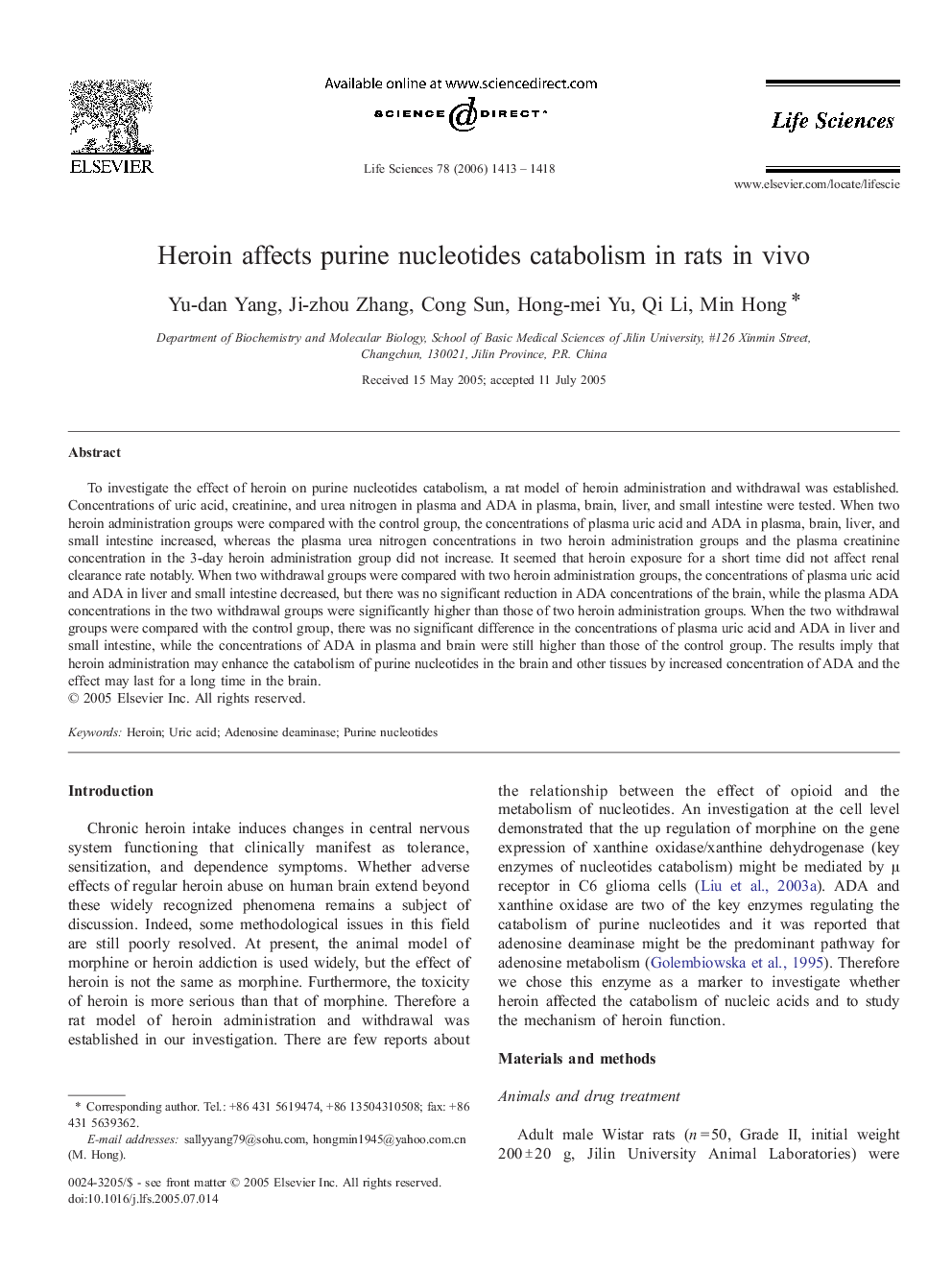| Article ID | Journal | Published Year | Pages | File Type |
|---|---|---|---|---|
| 2555006 | Life Sciences | 2006 | 6 Pages |
Abstract
To investigate the effect of heroin on purine nucleotides catabolism, a rat model of heroin administration and withdrawal was established. Concentrations of uric acid, creatinine, and urea nitrogen in plasma and ADA in plasma, brain, liver, and small intestine were tested. When two heroin administration groups were compared with the control group, the concentrations of plasma uric acid and ADA in plasma, brain, liver, and small intestine increased, whereas the plasma urea nitrogen concentrations in two heroin administration groups and the plasma creatinine concentration in the 3-day heroin administration group did not increase. It seemed that heroin exposure for a short time did not affect renal clearance rate notably. When two withdrawal groups were compared with two heroin administration groups, the concentrations of plasma uric acid and ADA in liver and small intestine decreased, but there was no significant reduction in ADA concentrations of the brain, while the plasma ADA concentrations in the two withdrawal groups were significantly higher than those of two heroin administration groups. When the two withdrawal groups were compared with the control group, there was no significant difference in the concentrations of plasma uric acid and ADA in liver and small intestine, while the concentrations of ADA in plasma and brain were still higher than those of the control group. The results imply that heroin administration may enhance the catabolism of purine nucleotides in the brain and other tissues by increased concentration of ADA and the effect may last for a long time in the brain.
Related Topics
Health Sciences
Medicine and Dentistry
Cardiology and Cardiovascular Medicine
Authors
Yu-dan Yang, Ji-zhou Zhang, Cong Sun, Hong-mei Yu, Qi Li, Min Hong,
